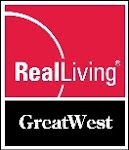First, we didn't need to visit the bank teller anymore. Then we were able to stick our checks right into the ATM without an envelope. Now we won't have to leave the house to make deposits.
Earlier this month, Sacramento-based Schools Financial Credit Union became the latest bank to allow customers to scan checks at home and deposit them over the Internet. Golden 1 Credit Union introduced scanner-based check deposits in July.
"Banking's not the way it was five or 10 years ago," said Nathan Schmidt, a vice president at Schools Financial. "With any type of technology, it becomes more convenient to self-service."
Another lender, USAA Federal Savings Bank, has gone even further down the convenience road. It allows customers to deposit checks with their iPhones by taking pictures of both sides of the check with the phone's camera.
According to an Oct. 6 article in American Banker, USAA customers have deposited more than 100,000 checks totaling $61 million with their iPhones since the service became available in August.
The article went on to say that giant Bank of America is expected to start testing mobile phone deposits soon.
Even with the widespread use of direct deposit and online banking, Americans still write and receive millions of paper checks each year.
A 2008 press release from the U.S. Treasury Department said that one in three Americans don't use direct deposit, including 10.5 million Social Security recipients.
And for the most part, when we have to deposit a paper check, we still need to go to an ATM to do it.
Businesses have been making deposits over the Internet for longer, ever since the passage in 2004 of the federal Check 21 Act.
Crafted in response to the banking system's paralysis in the wake of the terror attacks of September 2001, the act made a digital image of a check legally acceptable for payment.
Wednesday marks the act's fifth anniversary.
Businesses quickly saw the benefits of the new law. Sending checks as digital images eliminated courier costs and paperwork.
More than 60 percent of U.S. banks now offer merchant remote deposit – up from 50 percent in 2008, according to a June study by the Washington, D.C.-based Independent Community Bankers of America. Some 78 percent of banks plan to adopt the technology by 2011, the study found.
The extension of the service to consumers has come much more slowly. Cary Whaley, a director at the bankers group, said financial institutions have been wary about potential fraud.
"For many banks, it remains a business application," Whaley said. "The next step is the consumer side, but a lot of community banks are a little wary. When you're getting into thousands of consumers, the challenge for banks and credit unions is not only monitoring risk, but monitoring for changes in transactions and transaction amounts."
But some bankers said consumers are increasingly demanding the same convenience given to their business counterparts, and it's simply a matter of time before remote deposits become much more widespread.
Fewer than 1 million residential bank customers currently make deposits remotely over the Internet. But that number is expected to explode as more consumers catch on, and more banks make it available.
"It's clearly on the upswing," said John Leekley, founder and chief executive officer of the Georgia-based industry Web site RemoteDepositCapture.com. "The question is not whether we're going to reach 5 million, it's when. It's a matter of convenience and efficiency. I don't know anyone who enjoys going to a bank branch.
"If you can just scan a check on a phone or a home computer, it's really about getting that check sooner so you can get your money sooner."
When Schools Financial Credit Union decided to take the plunge, it included safeguards to prevent abuse. Customers must use their existing secure online banking log-in, and can't transmit items more than twice a day.
Users have a time limit to scan and deposit the check online and checks must meet specific requirements before they are deposited. Post-dated, damaged or lightly printed checks, for instance, will not scan properly and cannot be deposited.
Schools is rolling the program out over time. It will be available to all 40,000 members who bank online by mid-November.
All it requires to make a deposit is a digital scanner and a computer with an Internet connection.
In Sacramento, Golden 1 rolled out its Z@piT online deposit service in July to a customer base comfortable with doing business online. About 200 members are enrolled.
"So many people prefer to do self-service. They choose to go online – maybe they're parents with small kids, or they might not want to go to an ATM at 3 a.m.," said Golden One's chief executive officer, Teresa Halleck.
"People are already online," she said. "They're comfortable with electronic delivery and they're looking for more."
Source: SacBee



No comments:
Post a Comment